Awe-inducing creatures like mastodons, giant ground sloths, saber-toothed cats and even dire wolves (yep, they were a real thing — not just a “Game of Thrones” fantasy) have sadly gone extinct since the last ice age ended about 11,700 years ago. But that doesn’t mean you’re out of luck in seeing prehistoric creatures today. There are still plenty of wildlife species that predate recorded history, and that exist in the same forms they did when they roamed with our loincloth-clad ancestors.
Some of these animals can only be found in zoos and protected nature preserves because their populations are starting to fall, or they are already endangered. Others can still be found in the wild — and maybe even in your own backyard.
Wherever you see them, these ancient animals — some of which might surprise you — are sure to inspire wonder.
1. Gharial
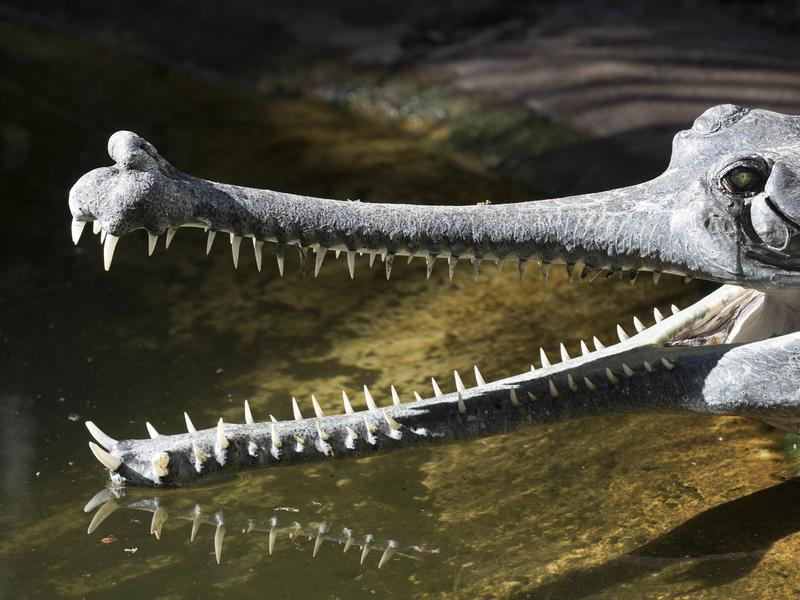
All crocodiles, caimans and alligators are ancient species, and they look the part. But one species of crocodilian — the gharial, sometimes called a gavial — beats them all in the prehistoric-looking beauty contest. Gharials have long, narrow, sword-like mouths full of buzzy teeth. Males develop a huge bulbous nose at the end of their snout, making them look rather comical.
Gharials in some form or another have been around for tens of millions of years, but the modern gharial is the last remaining species of this lineage. Alas, it too is heading towards extinction, with fewer than 200 individual reproducing gharials left in the wilds of India, Bangladesh and Pakistan. The IUCN has listed it as a “critically endangered” species.
Fortunately, the Kukrail breeding center at Kukrail Forest Reserve in Lucknow, India has been playing a massive role in gharial conservation efforts, by breeding the creatures and sending them out to zoos all over the world. The center is also open to the public, so you can get up close and personal with these spectacular beasts. Small populations are also present at Chitwan National Park and Bardia National Park in Nepal.
2. Komodo Dragon
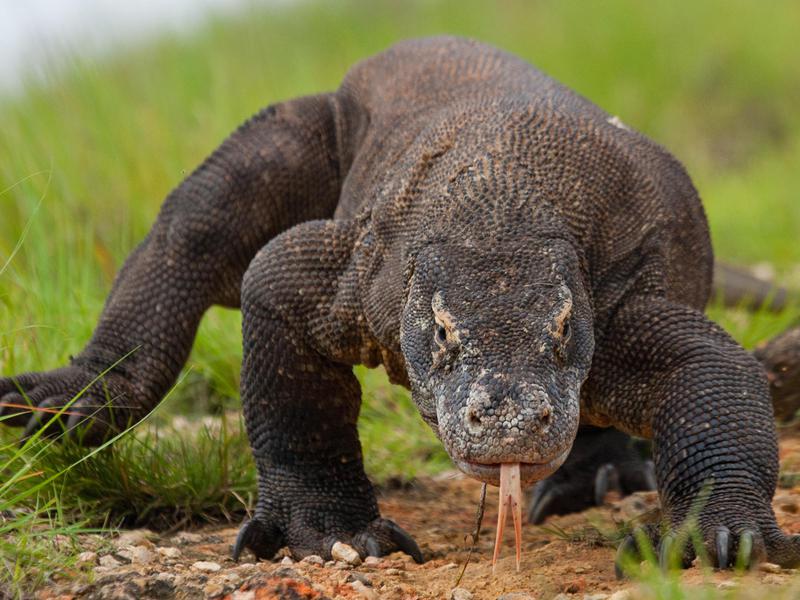
You can find Komodo dragons in Indonesia today, but that might not be where these iconic lizards came from originally. Scientists recently unearthed a series of Komodo dragon fossils in eastern Australia dating back as far as four million years ago.
These gigantic lizards can weigh as much (or more) than a human — and, in fact, they have been known to attack humans. Which is not ideal, since these giant reptiles are somewhat venomous.
However, if you’re still feeling brave, you can see Komodo dragons by booking with one of several outfitters leading excursions to Komodo National Park. The small Indonesian islands that make up this park are stunning, and offer many amenities for curious tourists.
3. Shoebill Stor
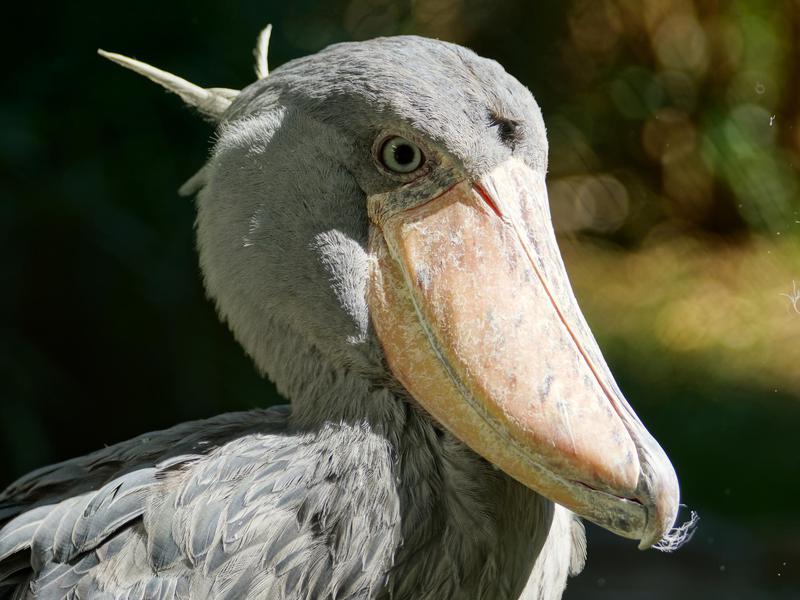
No one’s quite sure how the shoebill stork is related to other birds since different collections of data point to different living relatives, but one thing scientists agree on is that this is a very, very old bird. And it looks the part: Grayish and big-beaked, it looks like it walked right off the set of “The Flintstones.”
Shoebill storks are classified as “vulnerable to extinction” due to habitat destruction and poaching. But you can still see them in a protected area of the Mabamba Bay Wetland in Uganda, where several outfitters offer bird-spotting tours. As you paddle through the shallow lakes and ponds reminiscent of prehistoric swamps, you just might forget your place in time.
You already know about the one-humped camels used as transport in the Middle East before automobiles existed. But did you know that they evolved from the two-humped bactrian camel, which still roams the wilds of the Gobi Desert in Mongolia?
4. Bactrian camels
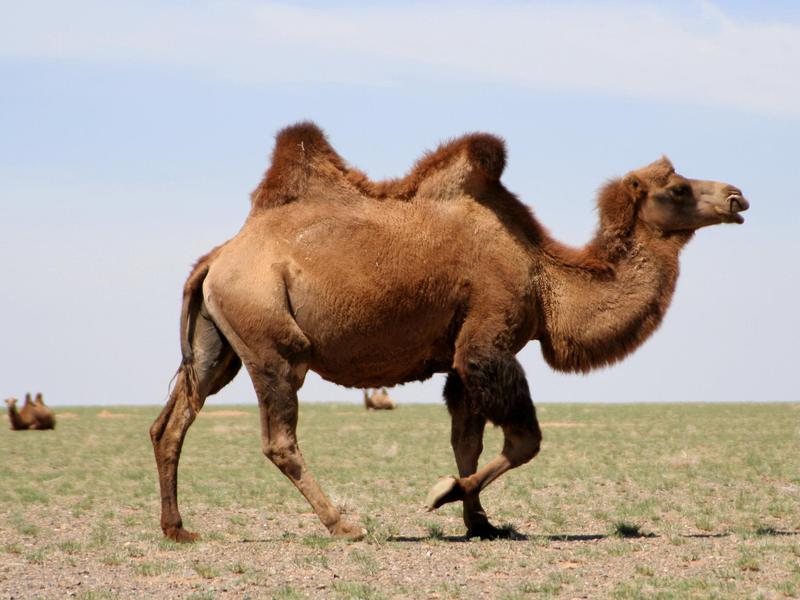
which sort of look like a cross between Chewbacca and a llama — evolved to withstand temperatures below 0°F and above 100°F some two million years ago. Its two humps are used to store fat, which the camel breaks down into energy and water to sustain it during long, dry, food-free periods (if only we could lose fat that easily too).
Bactrian camels are critically endangered in the wild, with fewer than 1,000 left, according to the IUCN. However, domesticated bactrian camels are an important part of Mongolian culture, and numerous tour operators offer camel-riding expeditions. In addition, visitors can check out the annual Thousand Camels Festival, held in early March in Umnugovi, Mongolia.
5. Echidna
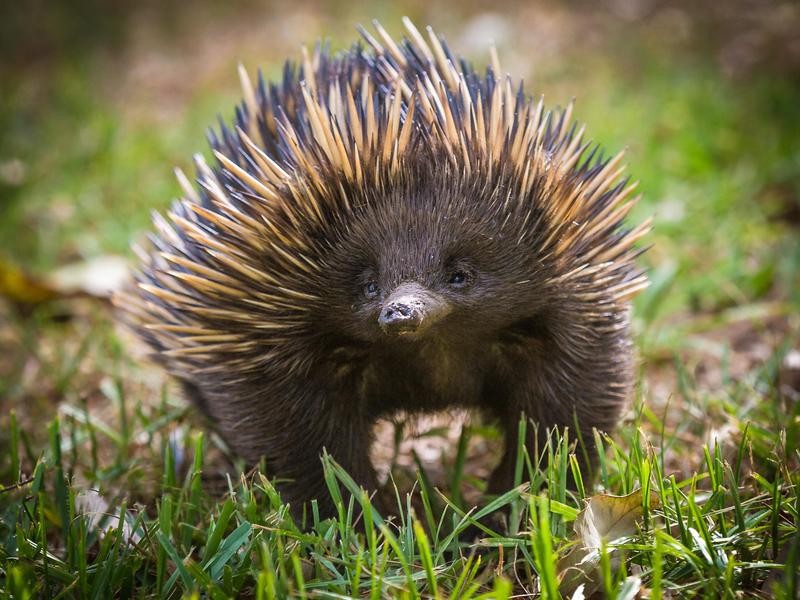
Echidnas are an amazing and bizarre creature that look like a cross between a badger, a porcupine and an anteater. They’re a monotreme, a type of primitive mammal that lays eggs instead of giving birth to live babies, just like their famous relative, the platypus.
These animals can also be hard to find in the wild, since they’re small, mostly nocturnal, and live a spaced-out and solitary life. Several species of echidna are also highly endangered — a sad fact, considering that these animals have been roaming the earth for an estimated 17 or so million years.
If you want to see a live echidna up close, your best bet is to visit one of the many zoos throughout New Zealand, Tasmania and Australia that house them. They can be found at the Bonorong Wildlife Sanctuary in Hobart, Tasmania, the Australia Zoo in Queensland, and the Taronga Zoo in Sydney.
6. Musk Oxen
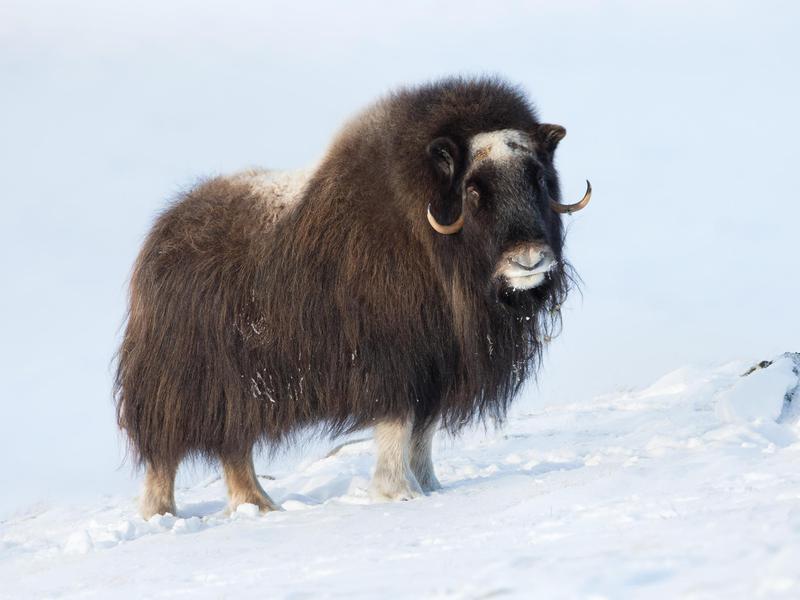
Musk oxen can be quite a sight (and smell) to behold, especially during the fall rutting season. During this time, bull musk oxen fight for control of harems by sprinting towards each other and bashing their heads with such force that it can shake the ground from a long distance away.
It’s a wonder how these animals still survive, but it’s estimated they’ve been around for 187,000 to 129,000 years. In the 1800s they were extirpated from Alaska, but after they were successfully reintroduced in the 1930s, the populations grew. Currently there are several thousand musk oxen in Alaska, though their populations have been declining in recent years.
It can still take some time to find these animals in the wild, but one of the best places to see them is in Nome, Alaska, where they regularly wander near the small tundra town. Nome is also the famous end point of the Iditarod dogsled race, which you can watch in early-to-mid March.
Make sure to also check out Nome vendors selling qiviut, the delicately soft underwool harvested from captive or even wild muskoxen. This wool is some of the finest and warmest in the world (what would you expect from an arctic animal?), and is even rarer than cashmere.
7. Vicuña
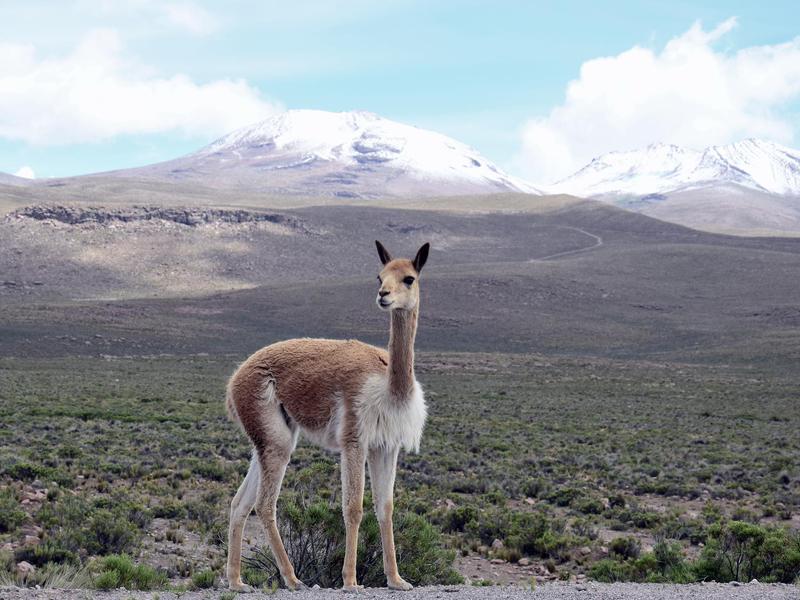
Speaking of luxury wool, another prehistoric animal known for its fiber is the vicuña, the ancestor of the modern-day alpaca. The two animals look very similar indeed, though vicuñas have a distinctive color pattern, with white undersides and a brown saddle across most of their body.
Although vicuñas were treasured by the Incas and protected, they were nearly driven to extinction by hunting after the Inca empire fell. Happily, thanks to the work of many dedicated conservationists, there are hundreds of thousands of vicuñas in the wild today.
You can see them throughout rural roads in south-central Peru, but one of the best places is in Huascarán National Park, north of Lima. There are all sorts of other treasures to see hidden away here, in the world’s highest tropical mountain range, including spectacled bears, Andean condors and the amazing Queen of the Andes flower.
8. Chambered Nautilus
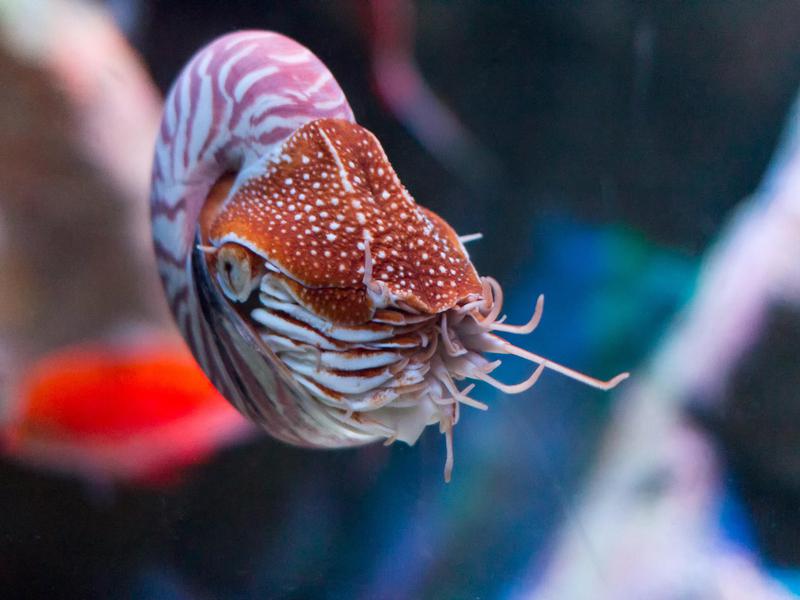
The chambered nautilus normally lives in the deep ocean around Australia and Indonesia, but if you happen to be in the area of the famous Monterey Bay Aquarium in California, you can see the ancient creatures up-close.
These alien-looking corkscrew-shaped animals are among the oldest in the world. Fossils of this animal have been found from 500 million years ago, and they still look exactly the same as today’s descendants.
They’re difficult to breed in captivity, and due to declining populations in the wild (are you sensing a trend yet?), the Monterey Bay Aquarium is at the forefront of research efforts. In fact, in Spring 2018, researchers successfully bred some of the first baby nautiluses in captivity.
9. Babirusa
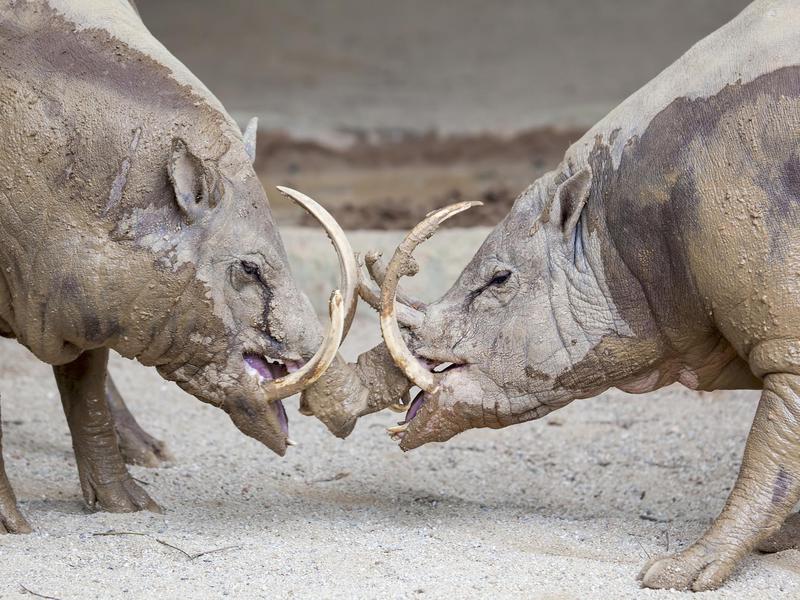
Babirusas are just like your everyday slightly irritable pig — except for the fact that males have gigantic tusks that grow upwards right through their snouts and curve back towards their heads. In fact, if unchecked for long enough, the tusks can pierce their foreheads. The lower tusks of babirusas grow upwards as well, making the animal look somewhat like a pig version of an orc.
Babirusa are old enough to appear on Indonesian cave paintings some 35,000 years ago. Today, there are several tour operators offering babirusa-watching safaris in the Nantu Forest and Tangkoko Nature Reserve in Indonesia.
10. Tapir
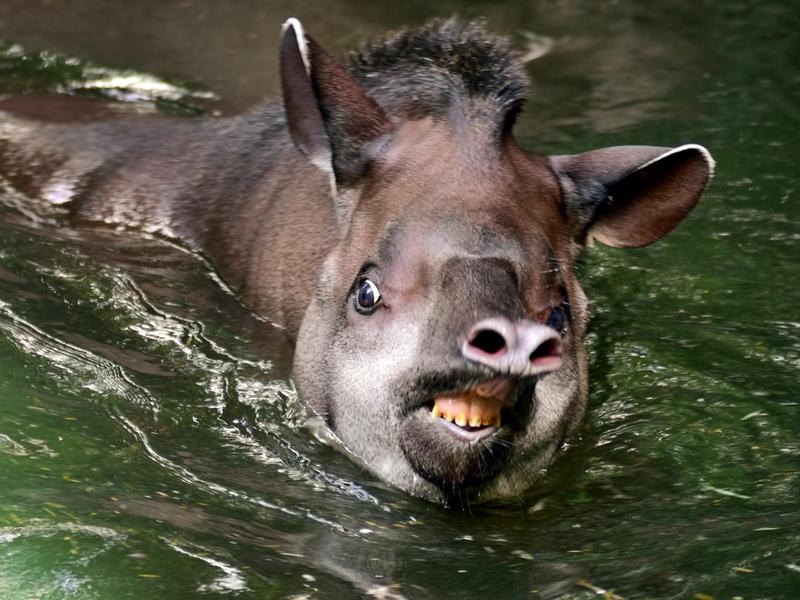
Like babirusas, tapirs also resemble pigs except for one key feature: a short, elephant-like proboscis that they use for roping food into their mouths. Tapirs also use their long snouts as snorkels while walking around underwater, one of their favorite pastimes.
While tapirs look rather porcine, they’re actually more closely related to horses and rhinoceroses. In fact, tapirs have a long, proud history in the fossil record, having first evolved in the Miocene epoch, as late as 23 million years ago. They’ve evolved into numerous species since then, although today there are only five remaining tapir species left across Asia, Central and South America.
One of the best places to see wild tapirs in the Americas is at Corcovado National Park in breathtaking Costa Rica. They can also be found throughout the Amazon rainforest — keep your eyes peeled!
11. White Rhinoceros

This ancient species is actually composed of two subspecies, the Northern White Rhinoceros and the Southern White Rhinoceros. Unfortunately, the Northern White Rhino population is down to just a few individuals, all of them female — meaning that the population will almost certainly go completely extinct within our lifetimes.
The Southern White Rhino is more of a conservation success story, however. The IUCN currently lists this subspecies as “Near Threatened,” with over 17,000 individuals worldwide.
Still, all rhino species are under constant threat from poachers, who harvest the horns for traditional Asian medicinal uses. This has led some conservationists to take drastic measures, such as surrounding especially important animals with armed guards, or even removing and destroying the rhino’s horns to remove the incentive for poachers to kill.
One of the best places you can see the Southern White Rhino today is in Kruger National Park in South Africa, home to hundreds of the majestic creatures (the most in any one place in Africa). Kruger National Park is one of the most popular destinations for safaris, and you’ll be guaranteed to see tons of other iconic African wildlife species as well.
12. Wobbegong Shark
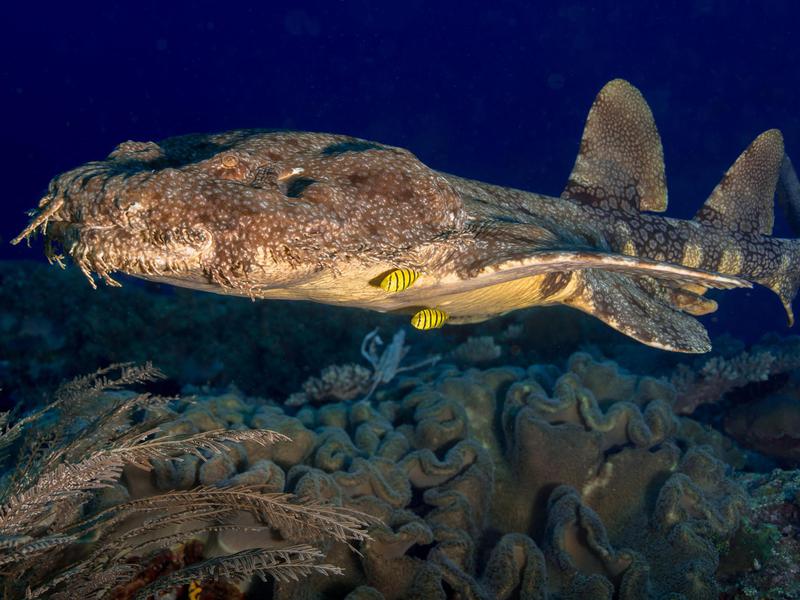
If you’re not looking carefully while on a tropical Pacific reef dive, you might miss seeing a wobbegong shark. In fact, these creatures are specifically trying to hide from you, using their flattened bodies, frilly edges and camouflage patterns to blend in with algae-covered rock. But once they start swimming and you see their smooth white bellies, the gig is up. There’s no mistaking a swimming wobbegong.
These sharks — which have been around since the Miocene epoch, some 11 million years ago — are still found in a couple different species, and most are too small to harm people. A few wobbegong shark attacks have been reported, but there have been no fatalities, and it’s likely that the injured parties just accidently stepped on them or got too close while diving.
You might get lucky and spot these animals while on a reef dive (just don’t get too close). If not, you can check them out at the Sydney Aquarium in Australia, where you can go on a guided shark swim even if you have no previous diving experience.
13. Horseshoe Crab
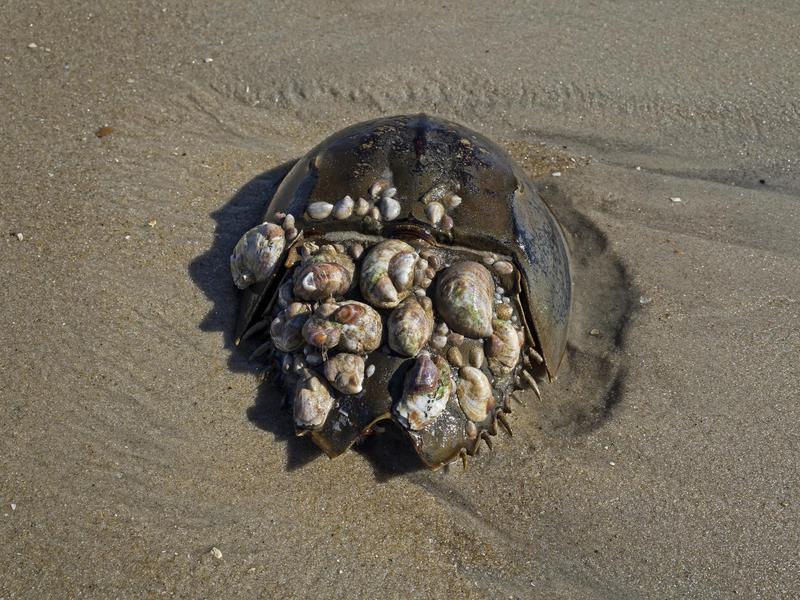
Horseshoe crabs are one of the oldest species on earth, having been around in more or less the same form since the Ordovician period, some 445 million years ago. Back in those days, the continents still hadn’t formed yet — there was one single supercontinent called Gondwanaland, and horseshoe crabs could be found in abundance around its shores even then.
Today, you can find millions of horseshoe crabs in Delaware Bay each May as the clunky, helmet-shaped creatures return to the beaches to breed. It’s the single largest concentration of horseshoe crabs in the world.
While you’re there, keep an eye out for rarely-seen shorebirds like the Red Knot and Ruddy Turnstone, which make a deliberate bee-line here during their annual northward migration to feast on the abundance of horseshoe crab eggs.
14. Polar Bear

Everyone’s familiar with the iconic polar bear these days. But when you step back and think about it, they really do look like something that could have wandered in off a glacier during the last ice age.
Actually, polar bears are a lot older than that. In 2010, scientists used a fossilized polar bear jawbone found in arctic Norway to discover that the animal lived around 120,000 years ago. These animals have been lumbering around in the white North since at least that time.
Churchill, Manitoba in Canada is one of the hotspots for tourists seeking a glimpse of these rare creatures, whose populations are currently declining. The town specializes in polar bear tourism, and outfitters even have special raised and reinforced tundra buggies that allow you to get right up next to the polar bears while still remaining safe (they are known predators of people, after all).
15. Tuatara
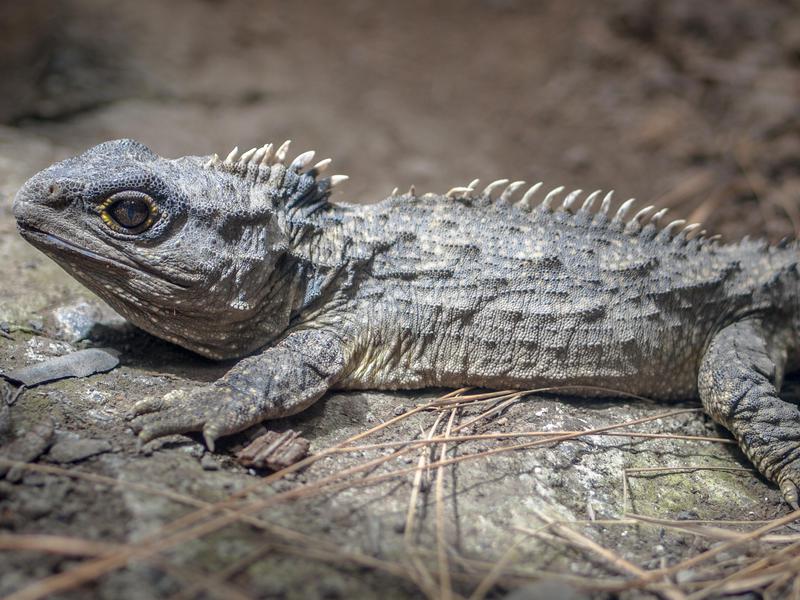
Sure, the tuatara might look like your everyday iguana-esque lizard, but don’t let the superficial appearance deceive you. This ancient reptile is believed to have existed at the same time as the dinosaurs, some 225 million years ago.
Today, the tuatara’s body contains clues of this ancient history. Indeed, they actually have a primitive third eye on the top of their head, although it’s hard to see and sometimes grown over with scales in adults. Scientists believe this is an archaic sort of light sensor, which the reptiles use to set their daily and seasonal biological functions. In addition, tuataras can still hear sounds, even though they have no outside ears, like modern-day reptiles. This is similar to how fish hear sounds underwater.
Tuataras can be found in New Zealand. You can’t really see them very easily in the wild, unfortunately, since they mostly live on predator-free islands nowadays. Still, you can view them up-close in many New Zealand zoos, such as the National Aquarium of New Zealand in Napier or Zealandia in Wellington.
16. Cassowary
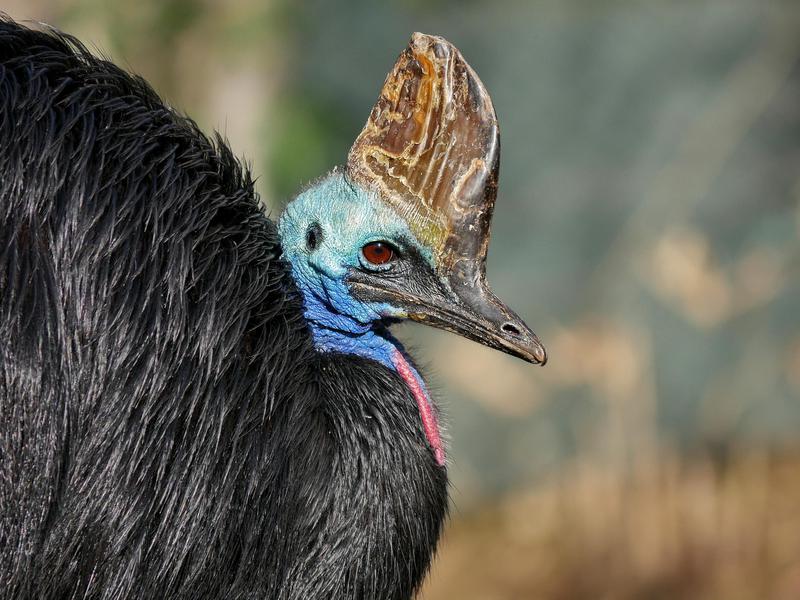
Cassowaries are about the closest-looking thing we have to a “Jurassic Park” velociraptor. These tall, colorful, bipedal birds have a huge slab-like ornament on the top of their head and a sharp, dagger-like claw on their feet. In fact, these birds have been known to attack and even (very rarely) kill people.
Ratites (large, flightless birds) like cassowaries and emus have been around for around 60 million years. These days, you can find cassowaries in northern Queensland and Papua New Guinea.
If you’re lucky, quiet and careful, you can spot them while walking through forest trails in the Cape Tribulation, Daintree and Mission Beach areas in Australia, where several guided outfits offer birdwatching tours. Remember to keep your distance, and not to feed them!
17. Chinese Giant Salamander
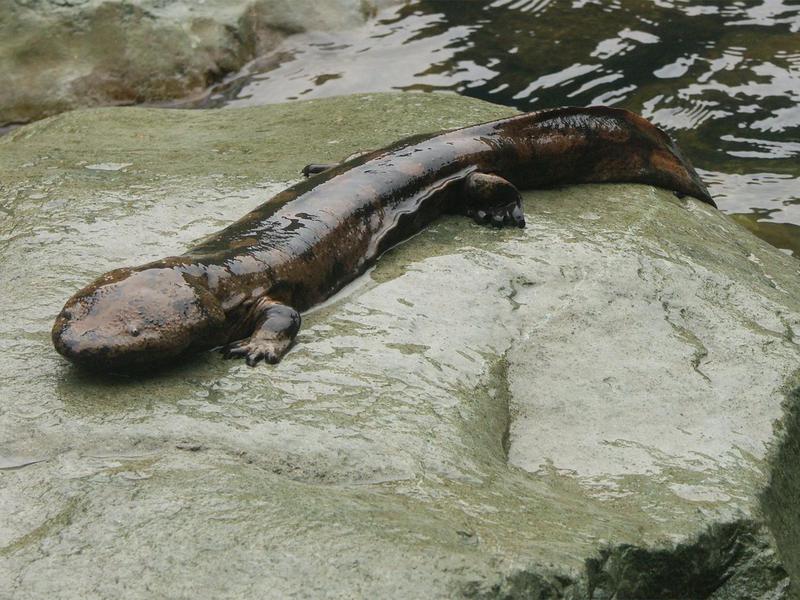
“Jurassic Park” may be a fantastical story, but there actually are animals from that time period that still roam the earth today. The Chinese Giant Salamander, which is an estimated 170 million years old, is one of them. It’s also the largest amphibian in the world; it can grow even larger than some people, up to 110 pounds and six feet in length.
These giant salamanders used to be found widespread in chilly Chinese mountain streams, but there are hardly any left in the wild at all now due to poaching for food and traditional medicine.
But if we’ve piqued your interest, you can still see one amazing example of this animal in the Prague Zoo. Karlo, one of the world’s largest living Chinese giant salamanders (weighing in at a whopping 77 pounds), is currently quite healthy and will hopefully be around for decades to come.
18. Chamois
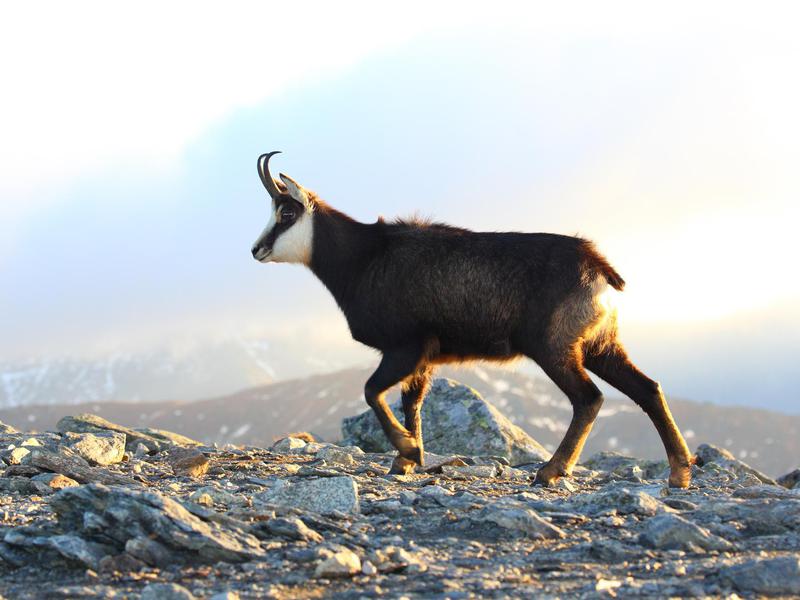
No, we’re not talking about the cloth. The animal chamois (pronounced sham-wah) first showed up on the map in western Europe during the last ice age, and they’ve been there ever since. In fact, they’ve even been found in cave paintings and carvings made by humans from this chilly time. The chamois looks like a goat with the face of an antelope. It has dark fur, and a lighter face with a dark streak across it.
Happily, the chamois is a conservation success story, unlike so many of their ancient comrades. Chamois are widespread throughout the Alps and the Pyrenees, where you can often see them along hiking trails.
One of the best trails to see wild chamois is along the Haute Route from Chamonix, France, to Zermatt, Switzerland. This two-week hike has also been rated as one of the top trails in the world, as it meanders through mountain meadows and breathtaking high-altitude lakes.
19. Whale Shark
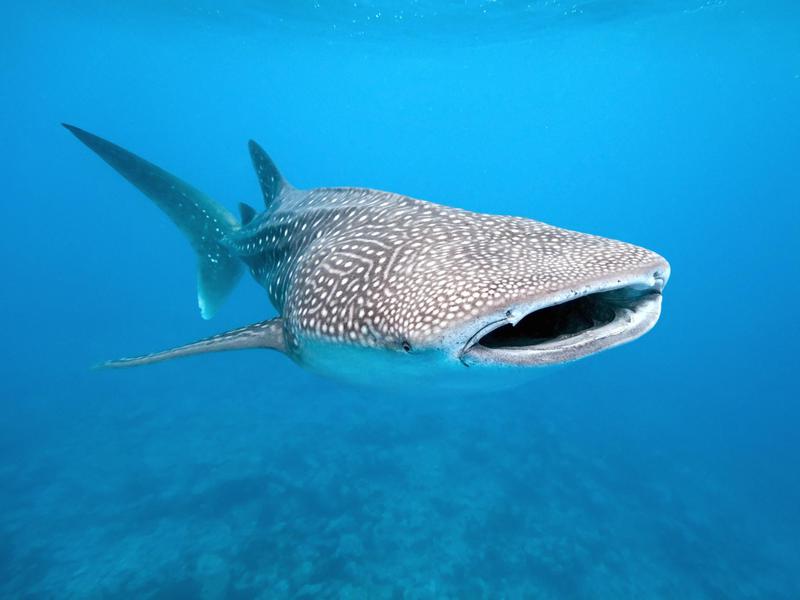
The name “whale shark” is a bit of a misnomer. This animal is not a whale at all; in fact, it’s the largest shark — the largest fish, even — in the world. What’s more, it’s been swimming around in the ocean for at least 28 million years.
These gigantic sharks can actually be found all around the equator, but seeing them isn’t as simple as that ubiquity suggests. First, you have to rent a boat. And since these animals are endangered, finding them even while out on the water is a tall order.
A better option is to visit the Georgia Aquarium in Atlanta. It’s home to some of the world’s only captive whale sharks, and you can even swim with them for a fee. (Don’t worry; whale sharks are filter feeders and not dangerous to humans at all.)
20. Lake Sturgeon
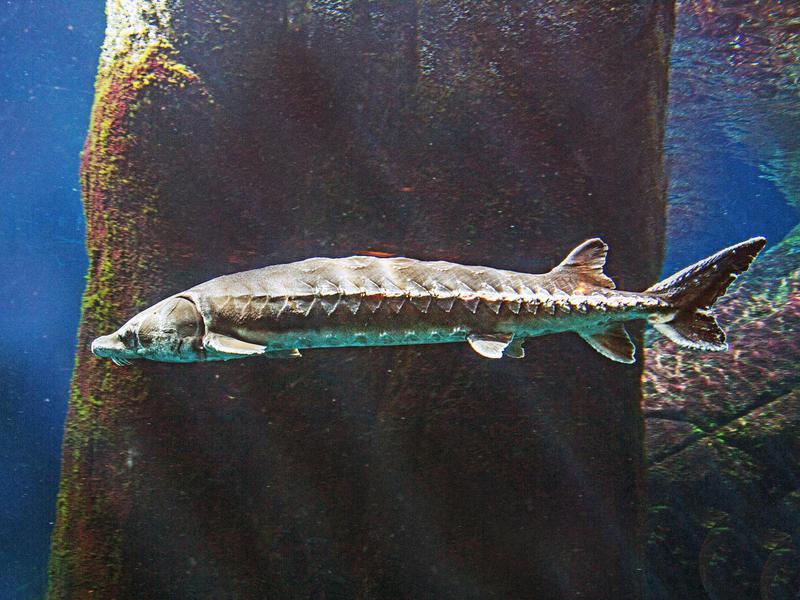
Speaking of old fish, another amazing aquatic animal to check out is the lake sturgeon. This ancient fish actually swam around with the dinosaurs, having shown up on the map some 150 million years ago, and it still swims around the United States today.
It’s also a bizarre animal in its own right. Lake sturgeon have no scales — only rubbery skin and a few rows of bony scutes — and can grow up to be over 7 feet long and weigh 300 pounds (imagine seeing that swim by while you’re dipping your toes in a lake this summer!).
As with whale sharks, lake sturgeon populations are dwindling, but you can see them reliably by visiting Shedd Aquarium along Chicago’s Lake Michigan coastline. The aquarium even has an interactive sturgeon touch pool, where you can feel the creature’s bony scutes for yourself.
21. Okapi
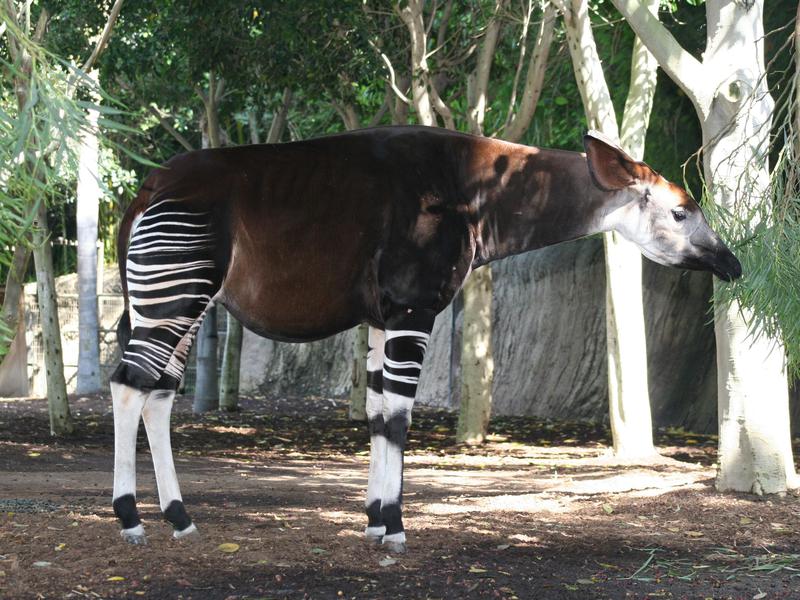
The fossil record is a bit spotty for the okapi, so information is spare, but one thing scientists can all agree on is that these animals are very old, perhaps even the oldest mammals left on Earth. They’re also very weird-looking, resembling a cross between a deer, a zebra and a giraffe — and in fact, they’re the only living relative of the latter.
Okapi evolved to live relatively solitary lives in the jungle, where a long neck might get caught in the dense trees. In fact, they’re so secretive that Western scientists didn’t even know they existed until 1900.
Up until relatively recently, it was possible to see okapi in the wild at the Okapi Wildlife Reserve in Democratic Republic of Congo. But due to a spate of deadly attacks, that’s not exactly recommended at the moment. Instead, you can see them in a wide range of zoos around the world that the Okapi Wildlife Reserve has partnered with.
22. Saiga Antelope
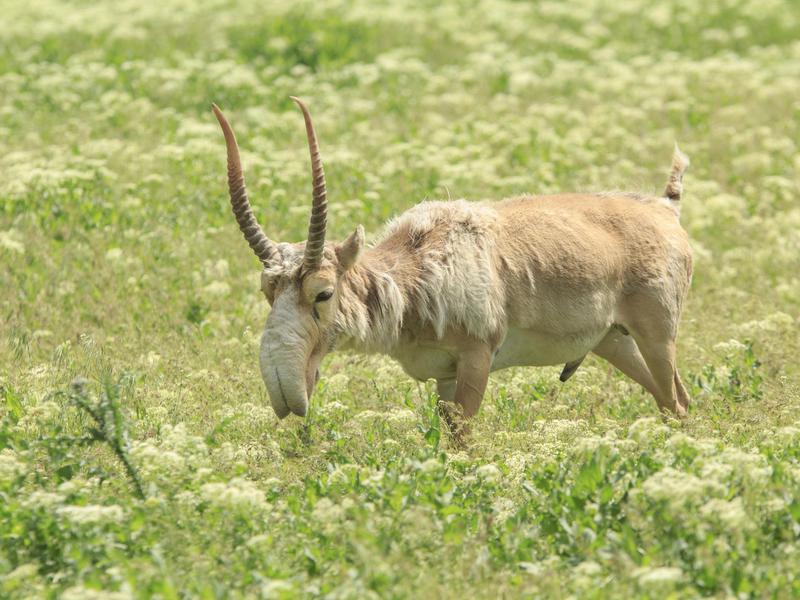
Another odd-looking animal is the saiga antelope. This creature looks more like a pronghorn antelope than a pig, and indeed it is more closely related to the pronghorn.
Saiga antelope were widespread across the northern hemisphere throughout the Pleistocene, but time has not been kind to them, unfortunately. After the Pleistocene ended they died off in North America, and they can only be found in a few scattered pockets around central Asia today.
There are even recent concerns about massive mysterious die-offs. Today, these animals are critically endangered with around 50,000 animals left, according to the IUCN. Few zoos have these animals and it’s even harder to see them in the wild, although the Askania Nova biosphere reserve in the Ukraine does have a small herd you can see.
23. Alligator Gar
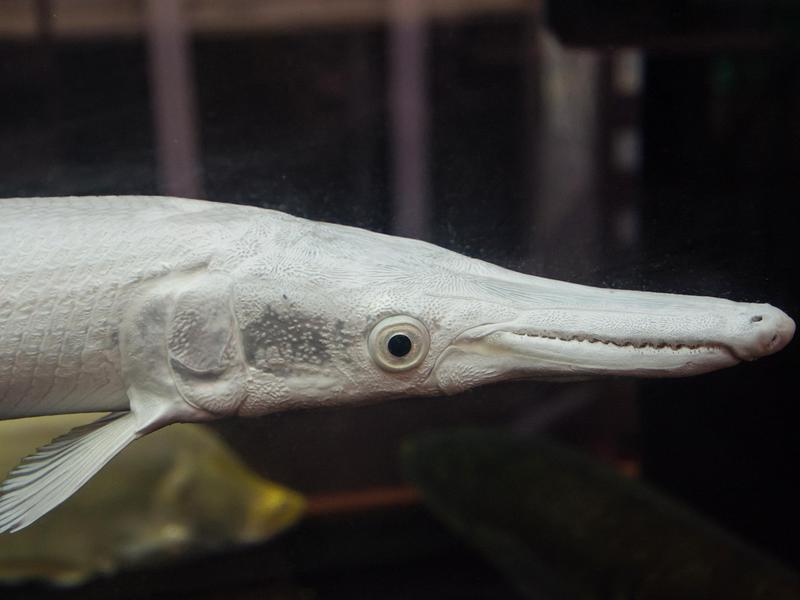
The freshwater alligator gar is another fish that you definitely do not want to find yourself staring at while swimming in the southern U.S. Even though they pose no threat to humans (so far…) these fish are as formidable as their namesake, alligators, with flat snouts full of razor-sharp teeth and a body size that can range up to 300 pounds.
This interesting animal also swam with the dinosaurs, and is believed to be 100 million years old. Today, one of the best spots to see alligator gar (aside from serene southern waterways) is at the Tennessee Aquarium. It’s even home to an all-white alligator gar, which you can see here.
24. Caribou
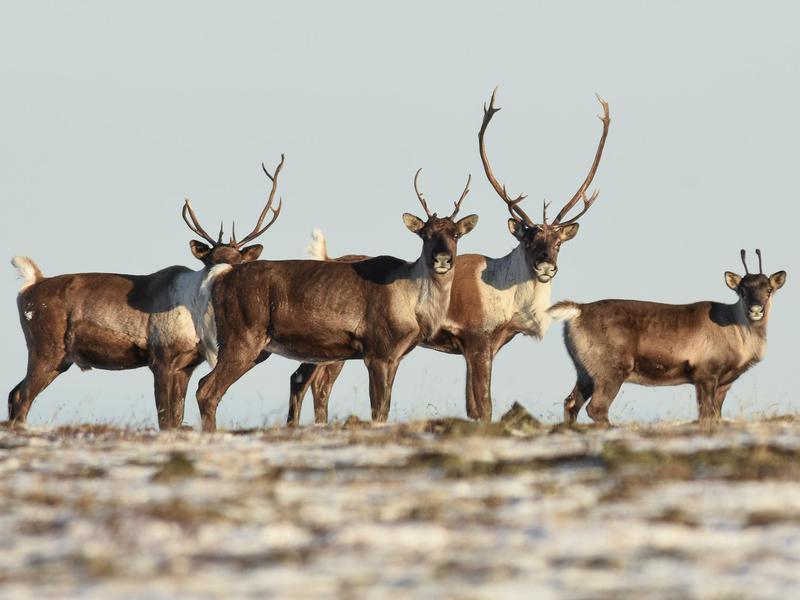
Caribou look like they walked straight out of the ice age — and indeed, they did. These unique animals evolved as long as two million years ago. Caribou were already present by the time humans arrived to cross the Bering land bridge and were surely a big part of their diets, just as they are today for Native Alaskans.
One of the really unique things about caribou is that they’re the only species of deer in which females also grow antlers. They’re usually not as big as the male’s ornate head wear, but females do keep them throughout the winter to guard pits in the snow that they’ve dug to get to their food. Then, in the springtime, they fall off.
Caribou can be found in remote areas throughout Alaska and Canada. One of the best ways to see them, however, is by taking a park-operated bus trip through Denali National Park. This massive park is home to a resident herd of caribou that are often spotted from the road. Keep an eye out for Dall sheep and brown bears as well, since these two species have also been here since the the last ice age.
25. Siberian Musk Deer
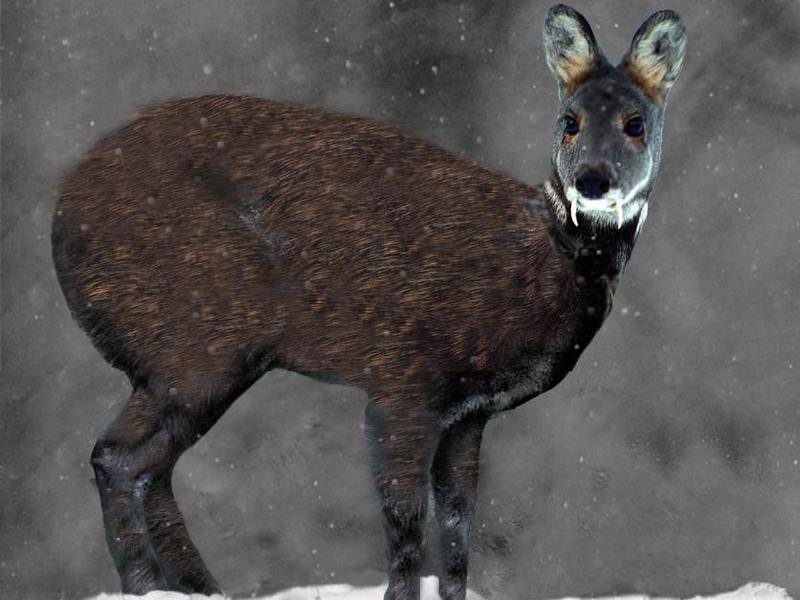
Imagine crawling through the thick brush of a remote primeval forest in northeastern Asia and coming face-to-face with a tiny deer…with 4-inch-long fangs.
Siberian musk deer are a real thing, and commonly called “vampire deer” due to their scary dentition, but in reality, these animals are strict herbivores. The tusks are only used for fighting, since the wee beasties lack the antlers of most of their distant cousins.
Siberian musk deer aren’t endangered yet, but they’re getting there. They’re often poached for their odiferous musk glands, which can fetch a high price on the black market. It’d be a shame to see them go extinct, especially considering they’ve been around for some three and a half million years. It’s hard to find them in the wild since they’re so rare and secretive in their forests, but you can see two male musk deer at Ranua Wildlife Park in the Finnish Lapland.
26. Sandhill Crane
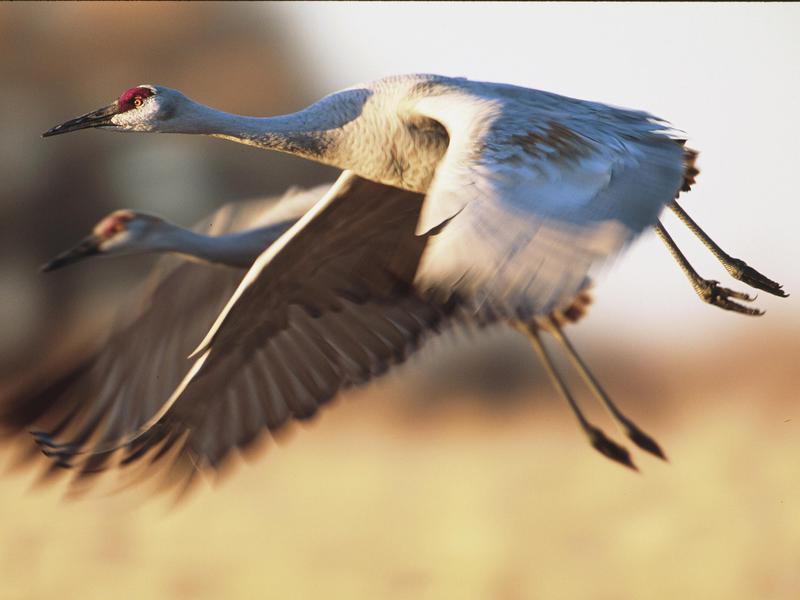
These tall, beautiful birds have long legs that stick far out behind them when they fly, making their silhouette resemble a pointy-tailed bearded dragon tail when aloft. And while they’re common and not often seen as ancient birds, they actually are: The oldest fossil sand-hill crane is at least two-and-a-half million years old.
Each spring, sand-hill cranes migrate en masse to their arctic breeding grounds, and Kearney, Nebraska, is one of their biggest stopover points. Over half a million birds will gather here at one time and fatten up in the cornfields for the long journey ahead. Then, according to some unknown and mysterious signal, the birds will seemingly all depart at once. It’s one of the greatest shows in the entire wildlife world.
27. Walrus
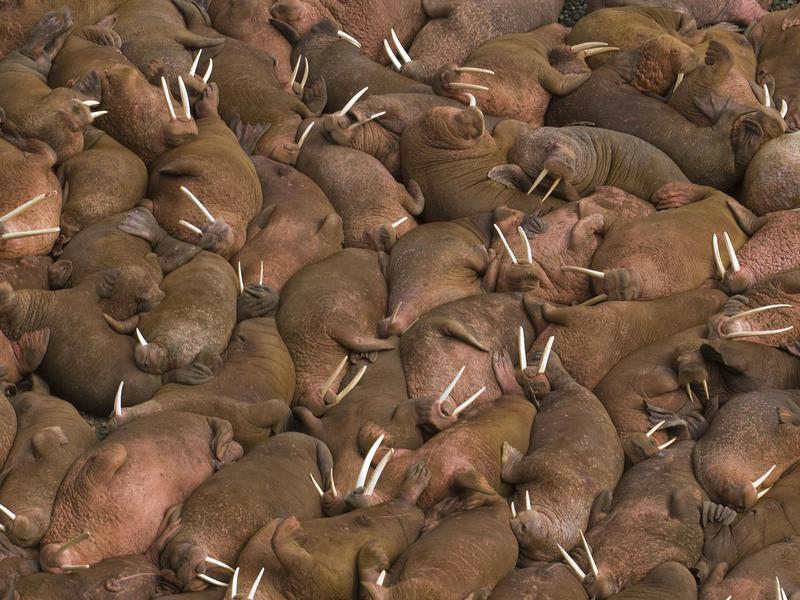
With their long whiskers and bulbous couch-potato shapes, walruses can sometimes resemble human family members. They’re also perfect snorkelers of the sea floor, vacuuming up clams, crabs and anything else that happens to be located near their mouths (which are also strangely human-like).
Walruses, which date back about 600,000 years, spend a lot of their time hanging out on ice floes, but from May to August they can be found on shore in huge concentrations called haulouts. It’s here that their big tusks come into play, as the males fight for control of the females.
It’s definitely not a place you want to walk up to very closely, but you can watch these big groups from afar. There are a few reliable haul-outs located in Alaska, although you’ll need to book an air taxi or a boat to go visit them.
Credit: Source
